Pruning clematis in spring and autumn
Undoubtedly, pruning is an important element of clematis care in a personal plot. Loved by many gardeners, this picturesque vine of bright and cheerful colors needs it almost every summer season.
Our article will discuss when it is better to prune, how to do it correctly, pruning after planting, in groups, as well as combined pruning of an unknown group.
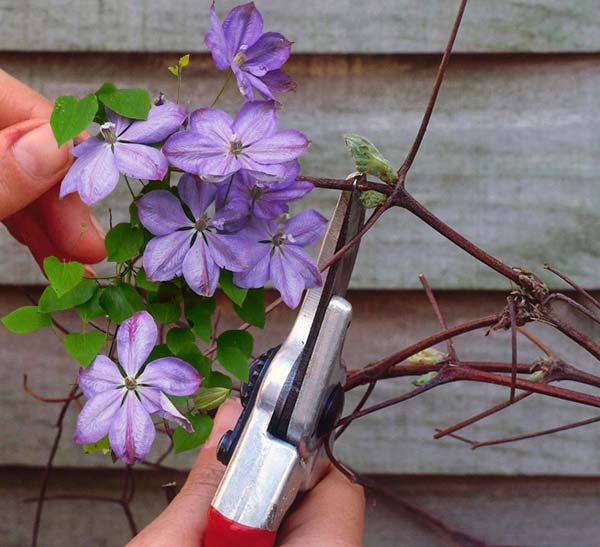
Note! One of the main reasons why clematis do not bloom or do not bloom very abundantly is their incorrect pruning.
Content
When to prune clematis: in spring or fall
The procedure can be carried out both in spring and autumn. However, seasonal pruning has its own nuances and goals, so each gardener independently determines the optimal pruning time for this blooming and climbing vines.
Important! In certain varieties, the buds form in the fall, which means that spring pruning cannot be carried out, and vice versa. Therefore, always carefully read the description of the plant on the package.
Video: a detailed lecture on pruning various types and varieties of clematis
Pruning in spring
If you decide to prune clematis in the spring, then this should be done in early spring, in other words, the procedure must be carried out before the buds awaken and the active sap flow in the plant begins.
In the spring, sanitary and thinning pruning is also mandatory.
By the way! The main advantage of pruning clematis in the spring is the fact that you will be exactly sure how much it is worth shortening clematis, which buds have woken up, and which ones have frozen over the winter.
Therefore, if you deliberately leave the vine on the trellis, although it is recommended to cover it, then pruning should be done only in the spring.
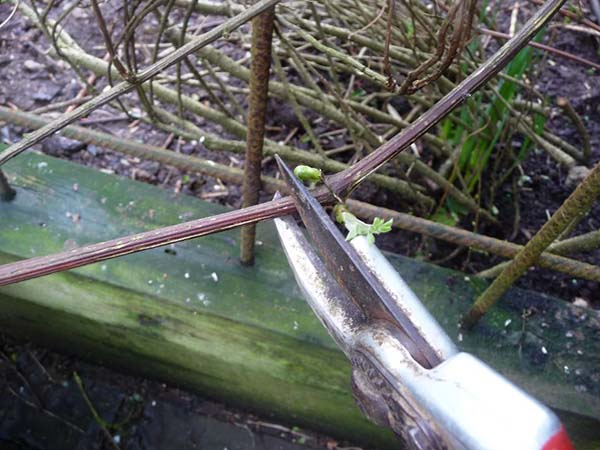
Important! After spring pruning, remember to secure the vine to a support. As such, this flowering shrub is perhaps the most beautiful to grow.
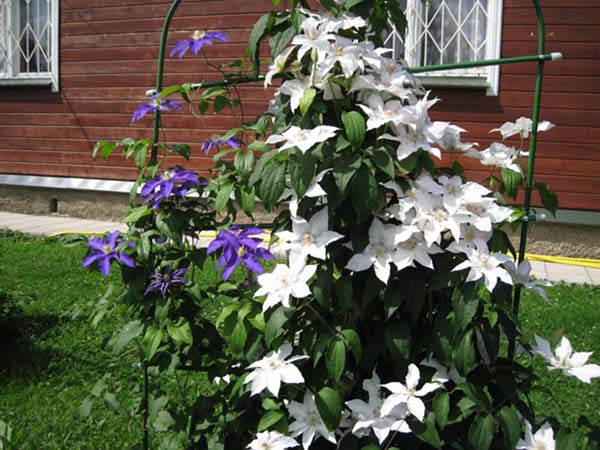
Pruning in the fall for the winter
The timing of pruning clematis in the fall is October-early November, in other words, before the first frost.
The purpose of the autumn pruning of clematis is to prepare them for winter, and specifically for shelter. But, as you know, only vines of 1-2 groups are subject to shelter, however, many gardeners during this period also prune 3 groupsblooming and climbing vines.
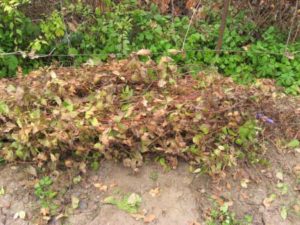
How to properly prune clematis in autumn and spring
Regardless of whether clematis belongs to a particular group, every autumn and / or spring must be carried out sanitary pruning, or rather, remove all diseased, broken and dry branches. Before sheltering for the winter, you also need to get rid of all the leaves. Do not forget aboutanti-aging procedure - removing old vines.
But naturally the most important thing when pruning clematis - this know which group he belongs to.
However, when buying a seedling, it is very difficult to determine exactly which pruning group it belongs to by its appearance. Therefore, you most often have to rely only on the good faith of the seller.
By the way! There is still a way to find out which group your plant belongs to. So if the flowersterrythen this is unambiguous second group trimming. If clematissmall-flowered, then most likely it is first groupplants from which every autumn are usually removed from supports, lightly pruned and laid on the ground for further shelter for the winter. Or better yet, use combined trimminguntil you experimentally understand which group your climbing plant belongs to.
Scheme for pruning clematis in the first year after planting and depending on its pruning group:
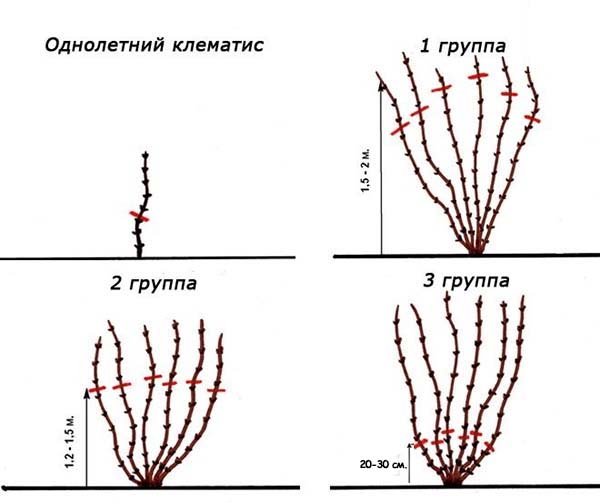
Video: trimming and covering clematis
Pruning clematis after planting
Regardless of which plant of which group you planted in your area, absolutely all specimens must be pruned after planting, and the bushes must be cut to a height of 20-30 cm, leaving 2-3 buds. This will help clematis to take root better and start actively branching the next year.
Important! You should not subject a young seedling to strong pruning if it already has stems with leaves, because they feed the roots. It is only recommended to pinch the top.
Pruning clematis 1 group
The first pruning group includes those clematis that bloom on the shoots of last year,which means that pruning is not needed for this type of flowering lianas, because otherwise, they simply won't bloom.
Another thing is that every year (after 2 years) part of the old branches must be removed, leaving them to replace new, annual ones.If this is not done, then in 3-4 years the clematis will be braided to such an extent that it will have to be cut off at the root.
Advice! Rejuvenating pruning of clematis of group 1 is convenient to carry out in the summer immediately after flowering, when you can easily determine which shoots have faded, which means they must be removed.
In other words, all pruning of clematis of group 1 is reduced to shortening it so that the vine is comfortable shelter for the winter as well as for better branching. Although, as a rule, vines of group 1 are still cut off, leaving 1.5-2 meters from ground level.
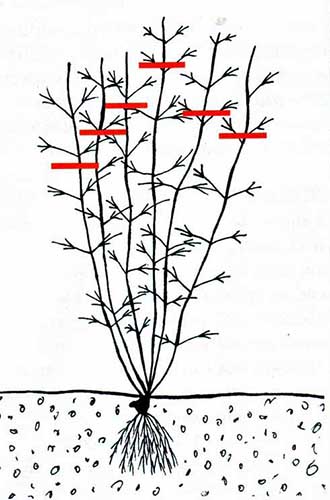
Worth knowing! Pruning group 1 includes the following types and hybrids of clematis (most of them are small-flowered): Alpine, Mountain, Large-petaled (Sakropetala), Patens (spreading), Florida (flowering) and others.
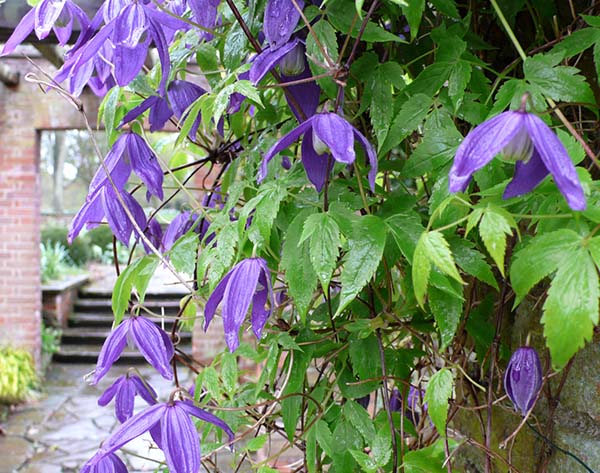
Pruning clematis group 2
The second pruning group includes clematis, which in bloom for the first time on the shoots of last year (in early summer)and their second bloom already happening on the shoots of the current year (in autumn).
Advice! In order for clematis to bloom profusely for the second time, you need to remove all the faded last year's shoots after summer flowering (you can remove to the buds below the inflorescences or completely).
Thus, clematis of the 2nd pruning group must be cut off from the ground at a level of 120-150 cm (a new increase that was formed this year) or a maximum of half.
Worth knowing! As a rule, with weak pruning, flowering earlier, but wintering is usually worse, with strong pruning, flowering later, but the plant itself hibernates much better and blooms more magnificently.
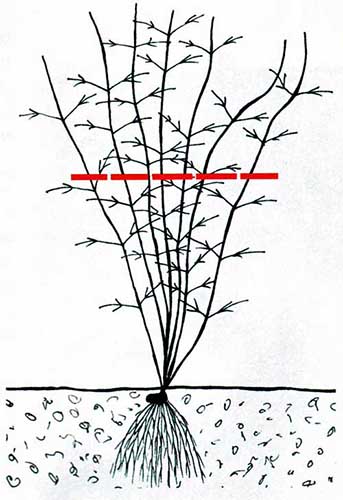
By the way! If you cannot distinguish old shoots from young ones, then you should know that the old branches become lighter in color over time, and their bark begins to peel off.
And don't forget to spend the spring sanitary (cut out sick, broken and dry branches) and thinning pruning(completely remove branches growing inside the bush and thickening it).
Worth knowing! The 2 pruning group includes the following types and hybrids of clematis (most often large-flowered and terry): Lanuginoza, part of the Patens and Florida hybrids, Woolly, as well as other large-flowered varietal hybrids.
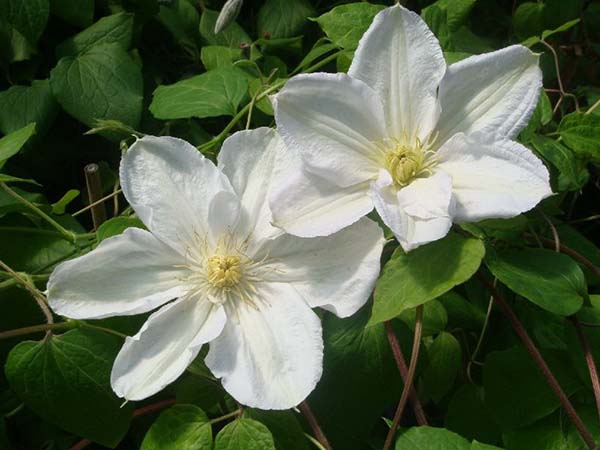
Pruning clematis 3 groups
The third group of pruning includes clematis, which bloom only on the shoots of the current year (in the second half of summer-autumn), which means that pruning is simply necessary for them. If you leave the shoots for the entire length, then flowering will be only at the very top of the vine (it may not be at all), and at the level of your eyes there will be one foliage. Moreover, if you leave the plant like this for a couple of years, then the bush will instantly thicken and become bare below.
Thus, clematis of the 3rd pruning group must be cut to a height of 20-30 cm from the soil level, leaving 2-3 buds. And it is better to get rid of very old and painful branches completely.
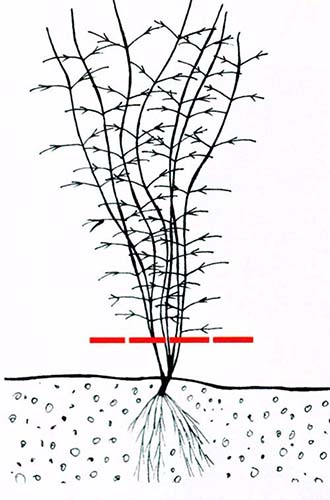
As a rule, it is the vines of 3 groups that are grown most often (the most popular), since they are very easy to cut and do not need to be covered.
Worth knowing! The 3 pruning group includes the following types and varieties of clematis (many terry): Vititsella, Zhakmana, Vostochny, Pryamy, Raznolistny, Texensis, Tangutika and others.
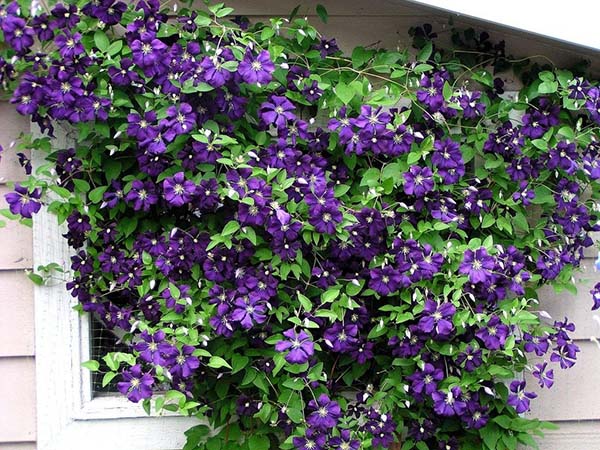
Combined pruning of clematis of an unknown group
If you are not sure or do not know which group the vine growing in your garden belongs to, then you need to conduct an experiment in the fall, namely, perform a combined clematis pruning: shorten the first half of the shoots to 1.5 meters above the ground, and the second half to 20-30 cm, leaving 2-3 buds. Next year, you will need to carefully monitor how the buds will awaken, on which shoots they will bloom (or will not). If the buds are preserved on the stems, and then shoots have sprouted from them and bloomed, this is the second group. If the kidneys are not preserved, this is the third group. Their flowers are formed on new shoots that grow almost from the very root.
By the way! If you have 2 groups of clematis, and you cut it off as 3 cut groups (that is, practically did not leave anything), then flowering will be on the shoots of the current year. As for the flowers (if they should be terry), then, most likely, they will be of the usual shape (no longer terry).
Thus, in order for the liana to bloom efficiently and luxuriantly, it is imperative to make sure to which pruning group the clematis belongs. Strictly in accordance with this, you need to properly cut and shelter him for the winter.
Video: how to trim clematis - basic rules and tips for each group
Interesting! Clematis is a very strong shrub that grows in one season, even when pruned to zero, to its full height - from 1.5 to 3.5 meters, depending on the variety (of course, if you take proper care of it) ...

